-
Executive Summary
-
Market
-
Introduction
-
Definition 18
-
Scope Of The Study
-
List Of Assumptions
-
Market Structure 19
-
Key Takeaways 20
-
Market Insights
-
Research
-
Methodology
-
Research Process 29
-
Primary Research 30
-
Secondary Research
-
Market Size Estimation
-
Forecast Model 32
-
Market
-
Dynamics
-
Introduction 34
- Relatively Greater
- High Prices Associated
- Increasing Demand
- Volatile Super Abrasives
-
Drivers 35
-
Adoption Of Super Abrasives Than Conventional Abrasives 35
-
Broad Application Spectrum Of Super Abrasives 35
-
Expanding Automotive Sector 36
-
Restraints 37
-
With Super Abrasives 37
-
Opportunities 38
-
In The Medical Sector 38
-
Growing Research Projects For Cost Reduction 38
-
Challenges 38
-
Demand In The Emerging Economies 38
-
Market Factor Analysis
-
Supply Chain Analysis 40
-
Raw Material Suppliers 40
-
Abrasives Manufacturers 40
-
Distribution Channel 41
-
End-User Industry 41
-
Porter’s Five
- Threat Of New Entrants
- Threat Of Rivalry
- Threat Of Substitute
- Bargaining Power
- Bargaining Power
-
Forces Analysis 41
-
Of Supplier 42
-
Of Buyer 42
-
Global Super Abrasives Market, By Product Type
-
Introduction 44
-
Vitrified Diamond 45
-
Vitrified CBN 46
-
Resin Bond Diamond
-
Resin Bond CBN 47
-
Metal/ Hybrid Bond CBN 48
-
Metal/Hybrid Bond Diamond 49
-
Electroplated Diamond 50
-
Electroplated CBN 51
-
Rotary Dressers 52
-
Stationary Dressers 53
-
Global Super Abrasives Market, By Application
-
Introduction 55
-
Cutting Tools 56
-
Tool Industry 56
-
Machinery 57
-
Bearings 58
-
Electronics/ Smartphones
-
Powertrain 60
-
Turbines 60
-
Gear 61
-
Primary Metal 61
-
Medical 62
-
Others 62
-
Global Super Abrasives Market, By Region
-
Introduction 64
-
North America 65
- Canada 70
- Germany 75
- Russia 79
- UK 83
- Czech Republic 87
- Rest Of Europe 91
- China 96
- Japan 100
- Rest Of Asia Pacific
-
U.S. 68
-
Europe 71
-
France 77
-
Italy 81
-
Poland 85
-
Romania 89
-
Asia Pacific 92
-
India 98
-
Australia & New Zealand 102
-
South Korea 104
-
Latin America 107
- Mexico 113
- Rest Of Latin America
-
Brazil 111
-
Argentina 115
-
Middle East & Africa
- Turkey 122
- Rest Of Middle East
-
Iran 124
-
& Africa 126
-
Competitive Landscape
-
Competitive Landscape 129
-
Introduction 129
-
Analysis 129
-
Key Development
-
Company Profiles
-
Saint Gobain 132
-
Key Strategy 133
-
Company Overview 134
-
Key Strategy 135
-
LimitedCompany Overview 136
-
Financial Overview 136
-
Products Offerings 137
-
Key Developments 137
-
Key Strategy 137
-
Company Overview 138
-
Key Strategy 139
-
Key Strategy 141
-
Key Strategy 143
-
Swarovski K.G. 144
-
Key Strategy 145
-
LTD. 146
-
Key Strategy 147
-
Company Overview 148
-
Key Strategy 149
-
Super Abrasive Products Co., Ltd 150
-
Company Overview 150
-
Key Strategy 151
-
Key Strategy 153
-
Company Overview
-
Financial Overview
-
Products Offerings
-
Key Developments
-
SWOT Analysis 133
-
3M 134
- Financial Overview
- Products Offerings
- Key Developments
- SWOT Analysis 135
-
Carborundum Universal
- SWOT Analysis 137
-
Noritake 138
- Financial Overview
- Products Offerings
- Key Developments
- SWOT Analysis 139
-
Meister Abrasives
- Company Overview
- Financial Overview
- Products Offerings
- Key Developments
- SWOT Analysis 141
-
KREBA & RIEDEL
- Financial Overview
- Products Offerings
- Key Developments
- SWOT Analysis 143
-
Tyrolit Schleifmittelwerke
- Financial Overview
- Products Offerings
- Key Developments
- SWOT Analysis 145
-
TOYODA VAN MOPPES
- Financial Overview
- Products Offerings
- Key Developments
- SWOT Analysis 147
-
SUPER ABRASIVES 148
- Financial Overview
- Products Offerings
- Key Developments
- SWOT Analysis 149
-
Zhengzhou Hongtuo
- Financial Overview
- Products Offerings
- Key Developments
- SWOT Analysis 151
-
VSM Abrasives Corporation.
- Financial Overview
- Products Offerings
- Key Developments
- SWOT Analysis 153
-
Conclusion
-
Key Findings 155
-
Watch 155
-
CEO’s Viewpoint
-
Key Companies To
-
List Of Tables
-
TABLE
-
MARKET SYNOPSIS 16
-
LIST OF ASSUMPTIONS
-
GLOBAL SUPER ABRASIVES
-
MARKET VALUE, BY PRODUCT TYPE, (2020-2027) (USD MILLION) 44
-
TABLE
-
GLOBAL VITRIFIED DIAMOND MARKET FOR SUPER ABRASIVES MARKET, BY REGION, (2020-2027)
-
(USD MILLION) 45
-
GLOBAL VITRIFIED
-
CBN MARKET FOR SUPER ABRASIVES MARKET, BY REGION, (2020-2027) (USD MILLION) 46
-
TABLE
-
GLOBAL RESIN BOND DIAMOND MARKET FOR SUPER ABRASIVES MARKET, BY REGION, (2020-2027)
-
(USD MILLION) 47
-
GLOBAL RESIN BOND
-
CBN MARKET FOR SUPER ABRASIVES MARKET, BY REGION, (2020-2027) (USD MILLION) 48
-
TABLE
-
GLOBAL METAL/ HYBRID BOND CBN MARKET FOR SUPER ABRASIVES MARKET, BY REGION, (2020-2027)
-
(USD MILLION) 48
-
GLOBAL METAL/HYBRID
-
BOND DIAMOND MARKET FOR SUPER ABRASIVES MARKET, BY REGION, (2020-2027) (USD MILLION)
-
GLOBAL ELECTROPLATED
-
DIAMOND MARKET FOR SUPER ABRASIVES MARKET, BY REGION, (2020-2027) (USD MILLION)
-
GLOBAL ELECTROPLATED
-
CBN MARKET FOR SUPER ABRASIVES MARKET, BY REGION, (2020-2027) (USD MILLION) 51
-
TABLE
-
GLOBAL ROTARY DRESSERS MARKET FOR SUPER ABRASIVES MARKET, BY REGION, (2020-2027)
-
(USD MILLION) 52
-
GLOBAL STATIONARY
-
DRESSERS MARKET FOR SUPER ABRASIVES MARKET, BY REGION, (2020-2027) (USD MILLION)
-
GLOBAL SUPER ABRASIVES
-
MARKET VALUE, BY APPLICATION, (2020-2027) (USD MILLION) 55
-
TABLE
-
GLOBAL CUTTING TOOLS MARKET FOR SUPER ABRASIVES MARKET, BY REGION, (2020-2027)
-
(USD MILLION) 56
-
GLOBAL TOOL INDUSTRY
-
MARKET FOR SUPER ABRASIVES MARKET, BY REGION, (2020-2027) (USD MILLION) 57
-
TABLE
-
GLOBAL MACHINERY MARKET FOR SUPER ABRASIVES MARKET, BY REGION, (2020-2027) (USD
-
MILLION) 57
-
GLOBAL BEARINGS
-
MARKET FOR SUPER ABRASIVES MARKET, BY REGION, (2020-2027) (USD MILLION) 58
-
TABLE
-
GLOBAL ELECTRONICS/ SMARTPHONES MARKET FOR SUPER ABRASIVES MARKET, BY REGION,
-
(2020-2027) (USD MILLION) 59
-
TABLE
-
GLOBAL POWERTRAIN MARKET FOR SUPER ABRASIVES MARKET, BY REGION, (2020-2027) (USD
-
MILLION) 60
-
GLOBAL TURBINES
-
MARKET FOR SUPER ABRASIVES MARKET, BY REGION, (2020-2027) (USD MILLION) 60
-
TABLE
-
GLOBAL GEAR MARKET FOR SUPER ABRASIVES MARKET, BY REGION, (2020-2027) (USD MILLION)
-
GLOBAL PRIMARY
-
METAL MARKET FOR SUPER ABRASIVES MARKET, BY REGION, (2020-2027) (USD MILLION) 61
-
TABLE
-
GLOBAL MEDICAL MARKET FOR SUPER ABRASIVES MARKET, BY REGION, (2020-2027) (USD
-
MILLION) 62
-
GLOBAL OTHERS
-
MARKET FOR SUPER ABRASIVES MARKET, BY REGION, (2020-2027) (USD MILLION) 62
-
TABLE
-
GLOBAL SUPER ABRASIVES MARKET, BY REGION, (2020-2027) (USD MILLION) 64
-
TABLE
-
NORTH AMERICA SUPER ABRASIVES MARKET, BY REGION, (2020-2027) (USD MILLION) 65
-
TABLE
-
NORTH AMERICA SUPER ABRASIVES MARKET, BY PRODUCT TYPE, (2020-2027) (USD MILLION)
-
NORTH AMERICA
-
SUPER ABRASIVES MARKET, BY APPLICATION, (2020-2027) (USD MILLION) 67
-
TABLE
-
U.S SUPER ABRASIVES MARKET, BY PRODUCT TYPE, (2020-2027) (USD MILLION) 68
-
TABLE
-
U.S SUPER ABRASIVES MARKET, BY APPLICATION, (2020-2027) (USD MILLION) 69
-
TABLE
-
CANADA SUPER ABRASIVES MARKET, BY PRODUCT TYPE, (2020-2027) (USD MILLION) 70
-
TABLE
-
CANADA SUPER ABRASIVES MARKET, BY APPLICATION, (2020-2027) (USD MILLION) 71
-
TABLE
-
EUROPE SUPER ABRASIVES MARKET, BY REGION, (2020-2027) (USD MILLION) 72
-
TABLE
-
EUROPE SUPER ABRASIVES MARKET, BY PRODUCT TYPE, (2020-2027) (USD MILLION) 73
-
TABLE
-
EUROPE SUPER ABRASIVES MARKET, BY APPLICATION, (2020-2027) (USD MILLION) 74
-
TABLE
-
GERMANY SUPER ABRASIVES MARKET, BY PRODUCT TYPE, (2020-2027) (USD MILLION) 75
-
TABLE
-
GERMANY SUPER ABRASIVES MARKET, BY APPLICATION, (2020-2027) (USD MILLION) 76
-
TABLE
-
FRANCE SUPER ABRASIVES MARKET, BY PRODUCT TYPE, (2020-2027) (USD MILLION) 77
-
TABLE
-
FRANCE SUPER ABRASIVES MARKET, BY APPLICATION, (2020-2027) (USD MILLION) 78
-
TABLE
-
RUSSIA SUPER ABRASIVES MARKET, BY PRODUCT TYPE, (2020-2027) (USD MILLION) 79
-
TABLE
-
RUSSIA SUPER ABRASIVES MARKET, BY APPLICATION, (2020-2027) (USD MILLION) 80
-
TABLE
-
ITALY SUPER ABRASIVES MARKET, BY PRODUCT TYPE, (2020-2027) (USD MILLION) 81
-
TABLE
-
ITALY SUPER ABRASIVES MARKET, BY APPLICATION, (2020-2027) (USD MILLION) 82
-
TABLE
-
UK SUPER ABRASIVES MARKET, BY PRODUCT TYPE, (2020-2027) (USD MILLION) 83
-
TABLE
-
UK SUPER ABRASIVES MARKET, BY APPLICATION, (2020-2027) (USD MILLION) 84
-
TABLE
-
POLAND SUPER ABRASIVES MARKET, BY PRODUCT TYPE, (2020-2027) (USD MILLION) 85
-
TABLE
-
POLAND SUPER ABRASIVES MARKET, BY APPLICATION, (2020-2027) (USD MILLION) 86
-
TABLE
-
CZECH REPUBLIC SUPER ABRASIVES MARKET, BY PRODUCT TYPE, (2020-2027) (USD MILLION)
-
CZECH REPUBLIC
-
SUPER ABRASIVES MARKET, BY APPLICATION, (2020-2027) (USD MILLION) 88
-
TABLE
-
ROMANIA SUPER ABRASIVES MARKET, BY PRODUCT TYPE, (2020-2027) (USD MILLION) 89
-
TABLE
-
ROMANIA SUPER ABRASIVES MARKET, BY APPLICATION, (2020-2027) (USD MILLION) 90
-
TABLE
-
REST OF EUROPE SUPER ABRASIVES MARKET, BY PRODUCT TYPE, (2020-2027) (USD MILLION)
-
REST OF EUROPE
-
SUPER ABRASIVES MARKET, BY APPLICATION, (2020-2027) (USD MILLION) 92
-
TABLE
-
ASIA PACIFIC SUPER ABRASIVES MARKET, BY REGION, (2020-2027) (USD MILLION) 93
-
TABLE
-
ASIA PACIFIC SUPER ABRASIVES MARKET, BY PRODUCT TYPE, (2020-2027) (USD MILLION)
-
ASIA PACIFIC SUPER
-
ABRASIVES MARKET, BY APPLICATION, (2020-2027) (USD MILLION) 95
-
TABLE
-
CHINA SUPER ABRASIVES MARKET, BY PRODUCT TYPE, (2020-2027) (USD MILLION) 96
-
TABLE
-
CHINA SUPER ABRASIVES MARKET, BY APPLICATION, (2020-2027) (USD MILLION) 97
-
TABLE
-
INDIA SUPER ABRASIVES MARKET, BY PRODUCT TYPE, (2020-2027) (USD MILLION) 98
-
TABLE
-
INDIA SUPER ABRASIVES MARKET, BY APPLICATION, (2020-2027) (USD MILLION) 99
-
TABLE
-
JAPAN SUPER ABRASIVES MARKET, BY PRODUCT TYPE, (2020-2027) (USD MILLION) 100
-
TABLE
-
JAPAN SUPER ABRASIVES MARKET, BY APPLICATION, (2020-2027) (USD MILLION) 101
-
TABLE
-
AUSTRALIA & NEW ZEALAND SUPER ABRASIVES MARKET, BY PRODUCT TYPE, (2020-2027)
-
(USD MILLION) 102
-
AUSTRALIA &
-
NEW ZEALAND SUPER ABRASIVES MARKET, BY APPLICATION, (2020-2027) (USD MILLION) 103
-
TABLE
-
SOUTH KOREA SUPER ABRASIVES MARKET, BY PRODUCT TYPE, (2020-2027) (USD MILLION)
-
SOUTH KOREA SUPER
-
ABRASIVES MARKET, BY APPLICATION, (2020-2027) (USD MILLION) 105
-
TABLE
-
REST OF ASIA PACIFIC SUPER ABRASIVES MARKET, BY PRODUCT TYPE, (2020-2027) (USD
-
MILLION) 106
-
REST OF ASIA PACIFIC
-
SUPER ABRASIVES MARKET, BY APPLICATION, (2020-2027) (USD MILLION) 107
-
TABLE
-
LATIN AMERICA SUPER ABRASIVES MARKET, BY REGION, (2020-2027) (USD MILLION) 108
-
TABLE
-
LATIN AMERICA SUPER ABRASIVES MARKET, BY PRODUCT TYPE, (2020-2027) (USD MILLION)
-
LATIN AMERICA
-
SUPER ABRASIVES MARKET, BY APPLICATION, (2020-2027) (USD MILLION) 110
-
TABLE
-
BRAZIL SUPER ABRASIVES MARKET, BY PRODUCT TYPE, (2020-2027) (USD MILLION) 111
-
TABLE
-
BRAZIL SUPER ABRASIVES MARKET, BY APPLICATION, (2020-2027) (USD MILLION) 112
-
TABLE
-
MEXICO SUPER ABRASIVES MARKET, BY PRODUCT TYPE, (2020-2027) (USD MILLION) 113
-
TABLE
-
MEXICO SUPER ABRASIVES MARKET, BY APPLICATION, (2020-2027) (USD MILLION) 114
-
TABLE
-
ARGENTINA SUPER ABRASIVES MARKET, BY PRODUCT TYPE, (2020-2027) (USD MILLION)
-
ARGENTINA SUPER
-
ABRASIVES MARKET, BY APPLICATION, (2020-2027) (USD MILLION) 116
-
TABLE
-
REST OF LATIN AMERICA SUPER ABRASIVES MARKET, BY PRODUCT TYPE, (2020-2027) (USD
-
MILLION) 117
-
REST OF LATIN
-
AMERICA SUPER ABRASIVES MARKET, BY APPLICATION, (2020-2027) (USD MILLION) 118
-
TABLE
-
MIDDLE EAST & AFRICA SUPER ABRASIVES MARKET, BY REGION, (2020-2027) (USD
-
MILLION) 119
-
MIDDLE EAST &
-
AFRICA SUPER ABRASIVES MARKET, BY PRODUCT TYPE, (2020-2027) (USD MILLION) 120
-
TABLE
-
MIDDLE EAST & AFRICA SUPER ABRASIVES MARKET, BY APPLICATION, (2020-2027)
-
(USD MILLION) 121
-
TURKEY SUPER ABRASIVES
-
MARKET, BY PRODUCT TYPE, (2020-2027) (USD MILLION) 122
-
TABLE
-
TURKEY SUPER ABRASIVES MARKET, BY APPLICATION, (2020-2027) (USD MILLION) 123
-
-
TABLE
-
IRAN SUPER ABRASIVES MARKET, BY PRODUCT TYPE, (2020-2027) (USD MILLION) 124
-
TABLE
-
IRAN SUPER ABRASIVES MARKET, BY APPLICATION, (2020-2027) (USD MILLION) 125
-
TABLE
-
REST OF MIDDLE EAST & AFRICA SUPER ABRASIVES MARKET, BY PRODUCT TYPE, (2020-2027)
-
(USD MILLION) 126
-
REST OF MIDDLE
-
EAST & AFRICA SUPER ABRASIVES MARKET, BY APPLICATION, (2020-2027) (USD MILLION)
-
KEY DEVELOPMENT
-
ANALYSIS 130
-
List Of Figures
-
FIGURE
-
GLOBAL SUPER ABRASIVES MARKET: MARKET STRUCTURE 19
-
FIGURE
-
KEY TAKEAWAYS OF THE SUPER ABRASIVES MARKET 20
-
FIGURE
-
NORTH AMERICA MARKET SIZE & MARKET SHARE BY COUNTRY (2020) 22
-
FIGURE
-
EUROPE MARKET SIZE & MARKET SHARE BY COUNTRY (2020) 23
-
FIGURE
-
ASIA-PACIFIC & MARKET SHARE BY COUNTRY (2020) 24
-
FIGURE
-
LATIN AMERICA MARKET SIZE & MARKET SHARE BY COUNTRY (2020) 25
-
FIGURE
-
MIDDLE EAST & AFRICA MARKET SIZE & MARKET SHARE BY COUNTRY (2020) 26
-
FIGURE
-
SUPER ABRASIVES MARKET, BY REGION, 2016 27
-
FIGURE
-
RESEARCH PROCESS OF MRFR 29
-
FIGURE
-
TOP DOWN & BOTTOM UP APPROACH 32
-
FIGURE
-
MARKEY DYNAMICS OVERVIEW 34
-
FIGURE
-
SPENDING ON GRINDING WHEELS & ABRASIVES IN METALWORKING INDUSTRY 36
-
FIGURE
-
Y-O-Y AUTOMOTIVE PRODUCTION 37
-
FIGURE
-
SUPPLY CHAIN ANALYSIS 40
-
FIGURE
-
PORTER’S FIVE FORCES ANALYSIS OF GLOBAL SUPER ABRASIVES MARKET 41
-
FIGURE
-
GLOBAL SUPER ABRASIVES MARKET SHARE, BY PRODUCT TYPE, 2020-2027(USD MILLION)
-
GLOBAL SUPER
-
ABRASIVES MARKET SHARE, BY APPLICATION, 2020-2027(USD MILLION) 55
-
FIGURE
-
GLOBAL SUPER ABRASIVES MARKET SHARE, BY REGION, 2020(%) 64
-
FIGURE
-
NORTH AMERICA: SUPER ABRASIVES MARKET SHARE, BY COUNTRY, 2020(% SHARE) 65
-
FIGURE
-
NORTH AMERICA: SUPER ABRASIVES MARKET, BY PRODUCT TYPE, 2020-2027(USD MILLION)
-
NORTH AMERICA:
-
SUPER ABRASIVES MARKET, BY APPLICATION, 2020-2027(USD MILLION) 67
-
FIGURE
-
EUROPE: SUPER ABRASIVES MARKET SHARE, BY COUNTRY, 2020(% SHARE) 71
-
FIGURE
-
EUROPE: SUPER ABRASIVES MARKET, BY PRODUCT TYPE, 2020-2027(USD MILLION) 72
-
FIGURE
-
EUROPE: SUPER ABRASIVES MARKET, BY APPLICATION, 2020-2027(USD MILLION) 73
-
FIGURE
-
ASIA PACIFIC: SUPER ABRASIVES MARKET SHARE, BY COUNTRY, 2020(% SHARE) 92
-
FIGURE
-
ASIA PACIFIC: SUPER ABRASIVES MARKET, BY PRODUCT TYPE, 2020-2027(USD MILLION)
-
ASIA PACIFIC:
-
SUPER ABRASIVES MARKET, BY APPLICATION, 2020-2027(USD MILLION) 94
-
FIGURE
-
LATIN AMERICA: SUPER ABRASIVES MARKET SHARE, BY COUNTRY, 2020(% SHARE) 107
-
FIGURE
-
LATIN AMERICA: SUPER ABRASIVES MARKET, BY PRODUCT TYPE, 2020-2027(USD MILLION)
-
LATIN AMERICA:
-
SUPER ABRASIVES MARKET, BY APPLICATION, 2020-2027(USD MILLION) 109
-
FIGURE
-
MIDDLE EAST & AFRICA: SUPER ABRASIVES MARKET SHARE, BY COUNTRY, 2020(% SHARE)
-
MIDDLE EAST &
-
AFRICA: SUPER ABRASIVES MARKET, BY PRODUCT TYPE, 2020-2027(USD MILLION) 119
-
FIGURE
-
MIDDLE EAST & AFRICA: SUPER ABRASIVES MARKET, BY APPLICATION, 2020-2027(USD
-
MILLION) 120

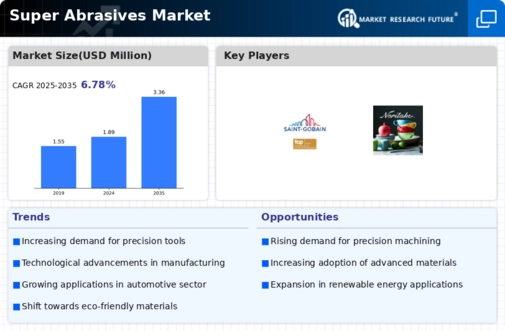

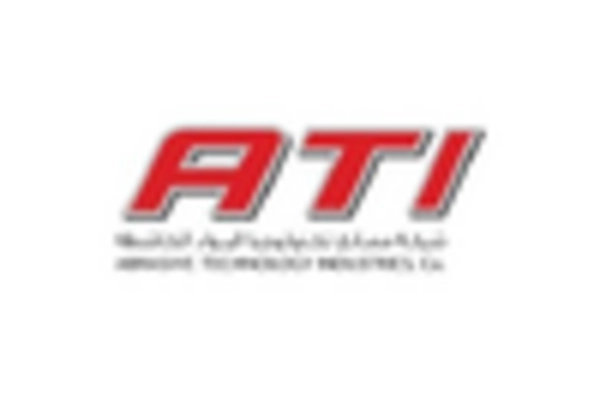
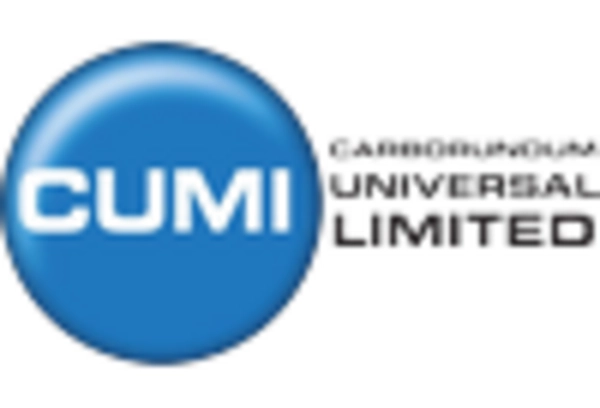
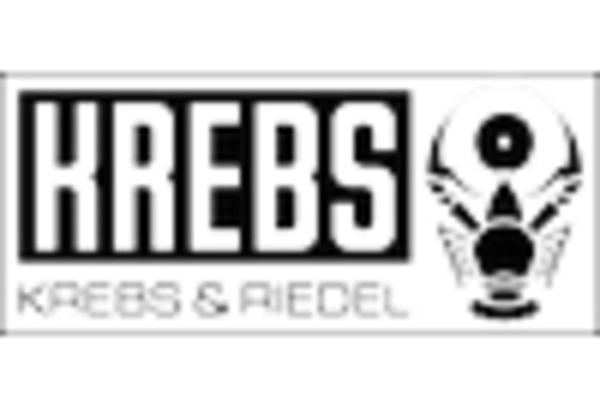
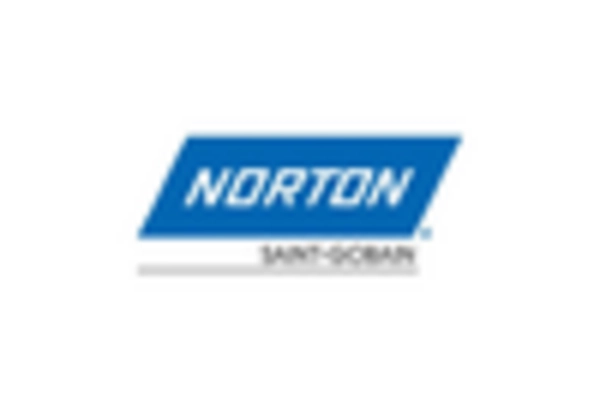










Leave a Comment